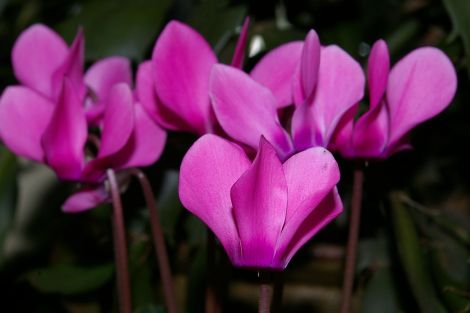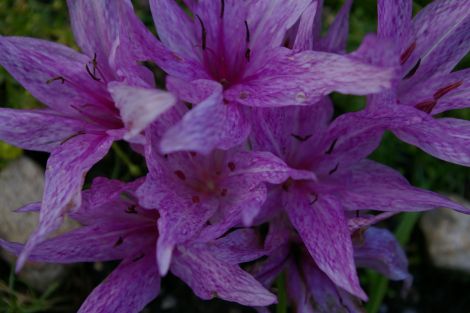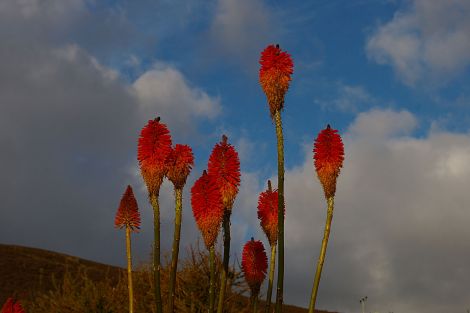Four Seasons / Four Seasons – Autumn 2012
There is a scene in Ang Lee’s wonderful 1995 film of Jane Austen’s Sense & Sensibility that has occupied my mind of late.
When the Dashwood family is driven from their home, they find refuge with their cousin John Middleton. Margaret, the youngest Dashwood girl, is fascinated by the Middleton household, especially the “adult” conversation that takes place over dinner, and partakes enthusiastically.
Her mother disapproves and tells her: “If you have nothing appropriate to say, please confine your remarks to the weather”.
I’m sure all of Shetland has seen that film, as everybody seems to be following Mrs Dashwood’s advice. We talk about the weather, nothing but the weather, the weather in general, but especially, and long after the event, about that dreadful summer we’ve had.
The parsnips, despite copious watering, never germinated, there’s a touch of fly damage in the carrots, the odd leek has bolted, but apart from that it’s been a fabulous year for vegetables.
We’ve had bumper crops of strawberries and raspberries (the blackbirds beat us to the black currants), and late August sowings are providing us with copious supplies of salad greens.
Perhaps the summer has been more dreadful in other parts of the islands than in mine, as the one, recently departed from Lea Gardens, was not at all bad – by Shetland standards.
Things not only grew, but flowered and fruited, which must surely be a good thing. There was that lengthy drought – carrot and parsnip sowings called for copious watering to coax them into germination, but that was the only drawback as far as I remember. The absence of rain meant absence of nasty fungal infections; ornamental plants grew more compact and therefore had greater wind resistance, they also flowered much longer due to cooler temperatures.
Become a member of Shetland News
Rain, as we all know from long experience, does arrive sooner, rather than later, and when it comes, rarely knows when to stop. Checking and, if necessary, clearing all drains and ditches features on Lea Gardens late summer curriculum, but this year was neglected at our peril.
Most of our drive ended up on the main road during that torrential September downpour, deep ruts have appeared all over the mortar paths of the New Garden, and the pond broke its southern boundary; undoing most of my recent labours by washing away two new plantings.
Autumn rains are essential for bringing about what I call our little spring. Whenever I step into the garden at this time of year I find pinks, mauves, lavenders and lilacs that seem to have strayed into beds and borders from a different season – autumn crocus, colchicum, cyclamen.
Cyclamen like a little lime, which I provide in the form of wood ash, and their dormant tubers enjoy a good summer baking amongst the greedy roots of trees and shrubs. Marbled foliage and shocking- pink flowers appear after a few good soakings.
My relationship with the autumn crocus is a chequered one. Many, such as the famous saffron crocus, refuse to flower and some won’t have anything to do with my garden full stop. The exception is C. speciosus ‘Conqueror’ a floriferous, lavender blue beauty with great staying power.
I sometimes try to recall what my autumn garden looked like before I discovered Colchicum ‘Waterlily’- a vigorous double cultivar of the ‘naked lady’ that flowers for weeks on end, stands up well to the weather and increases rapidly. From a handful of bulbs a decade ago I now have large patches and broad ribbons snaking their way through many borders. It looks superb naturalised in not too short grass.
Colchicum aggripinum is a temperamental creature, but can be persuaded to take up long-term residence in a raised bed of alkaline soil. Pale mauve buds appear at the end of September and soon expand into wide open stars. The translucent floral segments are tessellated and chequered like those of the snakeshead fritillary – well worth a little extra effort.
All these spring colours harmonise well with typical and appropriate autumn flowers, such as Michaelmas daisies and monkshood.
In South Africa it’s neither spring nor autumn, but summer, high summer. Plants moved from the winter rainfall areas of their Cape habitats to the northern hemisphere continue to stick to their climatic clock. There are sparks and fireworks, and an almost tangible heat, as the kniphofias, better known as red hot pokers, come into their own.
The only one commonly encountered in Shetland gardens is the ubiquitous early flowering, harshly red-yellow Kniphofia ‘Atlanta’. It was found growing in the garden of the Atlanta hotel in Tintagel (northern Cornwall) in 1962, where it flowers in April and May; its origins remain obscure to this day.
The RHS Plantfinder lists over 200 cultivars of this wonderful genus, alongside a handful of species. Amongst my favourites are K. ‘Wol’s Red Seedling’, a dainty plant with deep coral-pink flowers, and K. ‘Green Jade’. It’s long, slim inflorescences start chartreuse green before gradually fading to ivory white. Both flower from September onwards.
Kniphofia rooperi is a truly magnificent beast, tall, vigorous and evergreen; it revels in the Shetland climate. Its shaggy, yellow-orange torches reach for the sky from October until December.
Rosa Steppanova (www.leagardens.co.uk)
Become a member of Shetland News
Shetland News is asking its many readers to consider paying for membership to get additional features and services: -
- Remove non-local ads;
- Bookmark posts to read later;
- Exclusive curated weekly newsletter;
- Hide membership messages;
- Comments open for discussion.
If you appreciate what we do and feel strongly about impartial local journalism, then please become a member of Shetland News by either making a single payment, or setting up a monthly, quarterly or yearly subscription.






























































